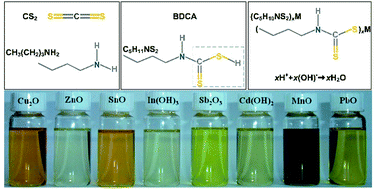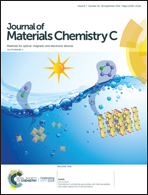Butyldithiocarbamate acid solution processing: its fundamentals and applications in chalcogenide thin film solar cells
Abstract
Solution methods have been widely explored in chalcogenide photovoltaics because of their simple processes and low cost. Currently, the solvents used in many solution processes are toxic and have low solubility for metal chalcogenides, such as hydrazine and diamine–dithiol solvents; this limits their development and large-scale applications. Butyldithiocarbamate acid (BDCA), a relatively environmentally friendly solvent compared with commonly used hydrazine and diamine–dithiol solvents, can dissolve various metal oxides and metal hydroxides; this, it is promising for the deposition of metal chalcogenide films. In this review, we introduce the fundamental chemical properties of BDCA in detail and summarize the application of the BDCA solution method in high-efficient and low-cost photovoltaics, including Sb2S3, Sb2S3−xSex, CuSbS2, Cu(In,Ga)(S,Se)2 and Cu2ZnSn(S,Se)4 thin film solar cells. We hope this review will stimulate more researchers to explore more metal chalcogenides and use them in different fields, such as photocatalysis and photodetectors.

- This article is part of the themed collection: Recent Review Articles


 Please wait while we load your content...
Please wait while we load your content...